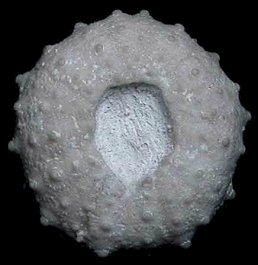 A A |
 B B |
|
Gautheria spatulifera (Forbes in Dixon, 1850) |
Moderately common regular echinoid from the Late Coniacian to Early Campanian of the White Chalk. Very similar to Gautheria radiata, though they only co-occur in the Seaford Chalk Formation where G. radiata is very rare. The key difference is the primary tubercles, which radically decrease in size above the ambitus for G. radiata, but not for G. spatulifera (compare). Gautheria spatulifera differs from Phymosoma koenigii by its relatively small primary tubercles (compare) and invaginated (concave / depressed) peristome (compare). Primary spines are elongate, fragile, with a spatula-like tip.
 A A |
 B B |
1). (A) adapical and (B) adoral views of an isolated test (x6.5, Surrey, Randell Collection, RR0320, Coniacian).
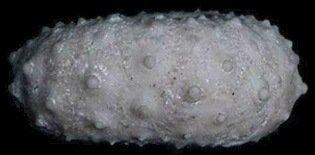
2). Lateral (side) view of the above specimen.
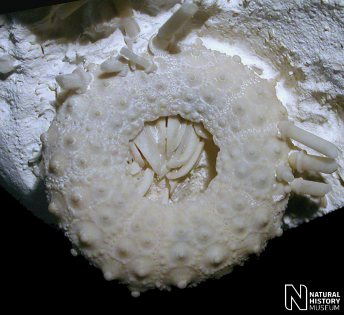 A
A |
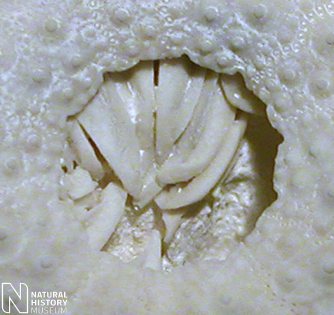 B
B |
3). (A) Adoral view of an individual preserved with articulated spines a semi articulated lantern (x4.0, Chalk, BMNH (British Museum (Natural History) London) E1931); (B) Detail of peristome and lantern (x8.0). Images © 2008 The Natural History Museum, by kind permission.
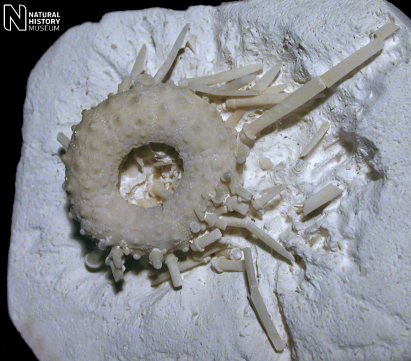 A
A |
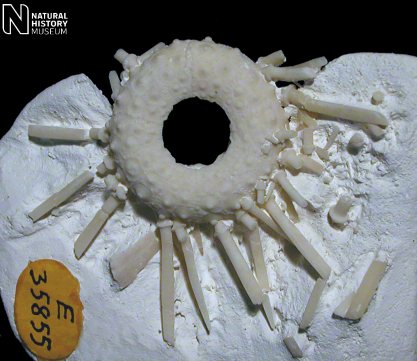 B B |
4). Adoral views of individuals preserved with a large compliment of articulated spines; (A) x3.0, White Chalk, BMNH (British Museum (Natural History) London) E2209); (B) x4.0, White Chalk, Seaford Chalk, Micheldever, Hampshire, BMNH E35855. Images © 2008 The Natural History Museum, by kind permission.
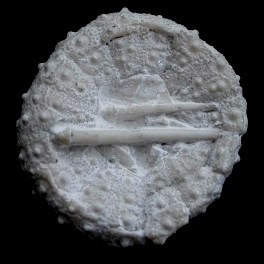 A A |
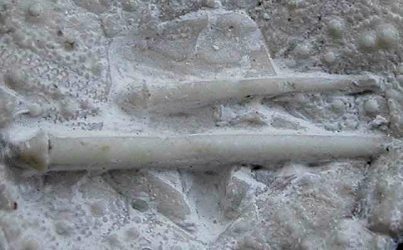 B
B |
5). Partially crushed test retaining primary spines and an articulated apical disc, White Chalk, Randell Collection, RR1508). (A) General view (x4). (B) Detail of apical disc. Notice a curious double-primary-tubercle, top right (x9).
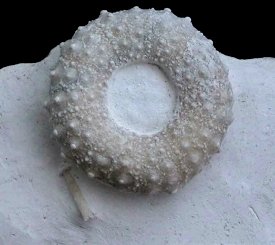 A A |
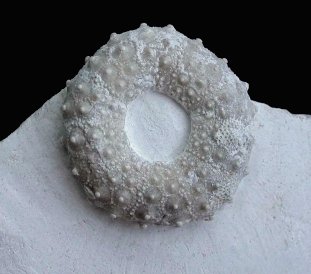 B B |
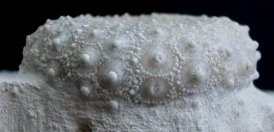 C C |
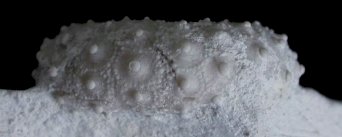 D D |
6). Adoral (A, B) and lateral (side)(C, D) views of complete tests. (A) has an associated primary spine. ((A x3.5)(C x5), Broadstairs, Seaford Chalk Formation, Randell Collection, RR1502); ((B x2.5)(D x3.5), Pegwell Bay, Seaford Chalk (Haven Brow Beds), Randell Collection, RR1501).
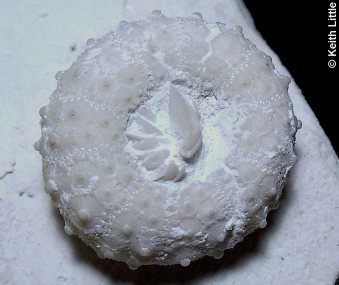 A
A |
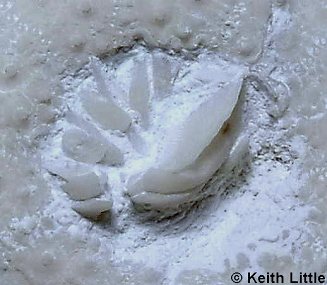 B
B |
7). Adoral views of a rare specimen retaining a largely articulated lantern (Seaford Chalk, Thanet Coast, Kent, in the collection of Keith Little): (A) General view (x3.5); (B) Detail of peristome and lantern (x8.0). Images © 2010 Keith Little, by kind permission.
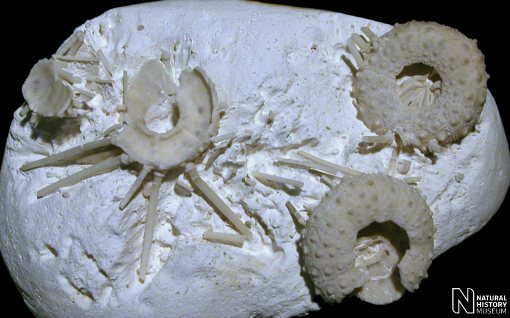
8). An exceptional association of tests preserved with articulated spines and a lantern (x2.0, Chalk, BMNH (British Museum (Natural History) London) E1931). Image © 2008 The Natural History Museum, by kind permission.
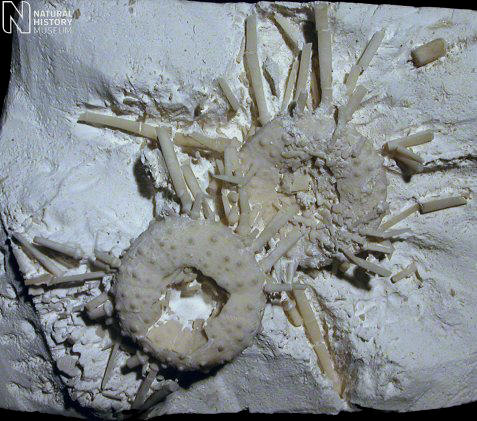
9). A pair of exceptionally preserved individuals (x2.5, Chalk, Kent, BMNH (British Museum (Natural History) London) 32719). Image © 2008 The Natural History Museum, by kind permission.
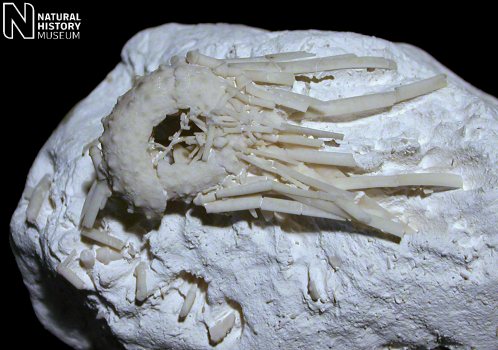
10). Adoral view of an exceptionally preserved individual (x3.5, White Chalk, Seaford Chalk, Micheldever, Hampshire, BMNH (British Museum (Natural History) London) E35841. Image © 2008 The Natural History Museum, by kind permission.
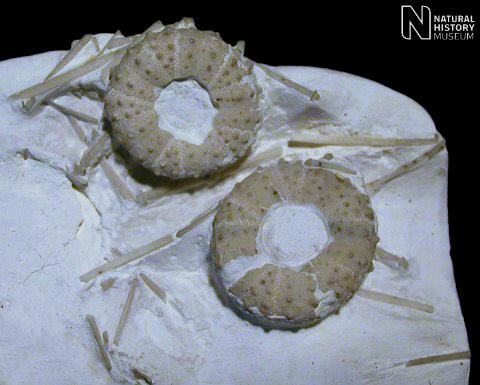
11). An association of tests and primary spines (x2.2, White Chalk, Kent, BMNH (British Museum (Natural History) London) 34086. Image © 2008 The Natural History Museum, by kind permission.
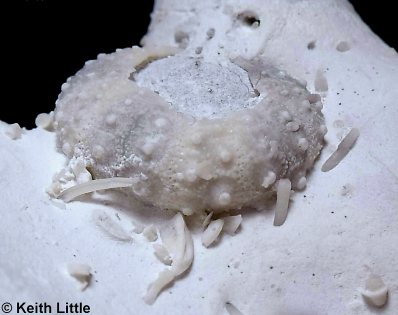 A A |
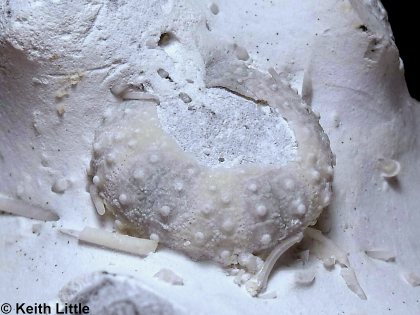 B
B |
12). Lateral & adapical surfaces of test with associated spine and lantern elements, embedded in flint (Seaford Chalk, North Foreland, Kent, in the collection of Keith Little); (A) x4.7; (B) x5.0. Images © 2010 Keith Little, by kind permission.
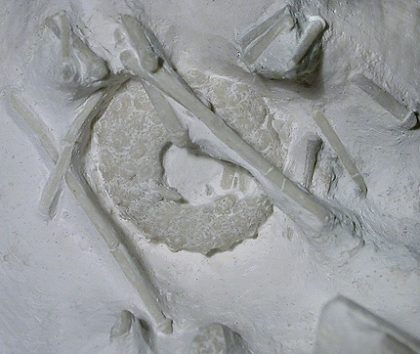
13). Complete test with spine compliment. The spatula-like nature of the spine-tips can be seen (x4, Newhaven Chalk Formation (Old Nore Beds), Peacehaven, Randell Collection, RR1484).
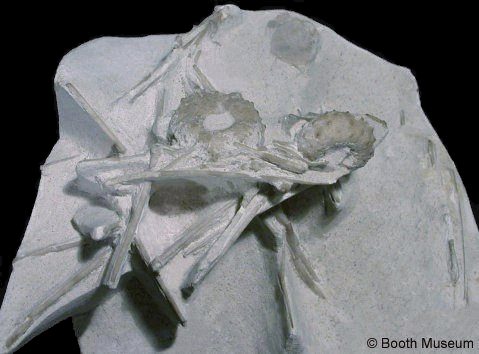
14). Complete tests with spine compliments. Pair of tests (x1.5, from the Willett collection, Booth Museum, BMB 007848, by kind permission of John Cooper).